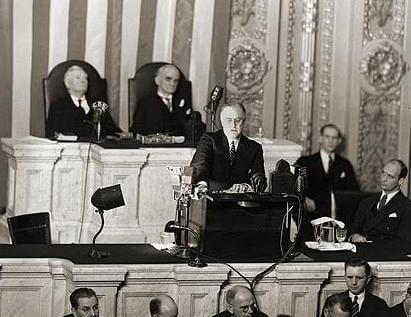Uniting the States: America's Reaction to Pearl Harbor
Events like the attack on the World Trade Center in 2001 have proven that in times of turmoil, citizens of the United States will band together for the good of the nation. While there are multiple instances throughout America’s history, the American reaction to Pearl Harbor after the attack on December 7th, 1941 is often cited as the greatest instance of the country coming together against a common enemy.
After Japan’s fighters flew in and caused a devastating amount of damage and destruction, the nation launched into a war campaign that nearly everyone originally seemed to be against. The declaration of war against Japan on December 8th wasn’t a question – it was expected, and much of the country was willing to get behind it and provide whatever service was needed.
Unlike conflicts like the Vietnam War, where many Americans were doing everything they could – including fleeing the country – to avoid taking part, after the attack on Pearl Harbor American men embraced the draft. In the United States government, a body that rarely seems to work together, the votes in the Senate and House were a landslide in favor of going to war, with only one Representative voting against.
The Public and War
After President Roosevelt addressed the nation after the attack on Pearl Harbor, those who once opposed the conflict were gearing up to serve in any number of ways. For those unable to serve overseas, it was about filling vacancies left by those that could. War bonds became popular gifts and those who could afford it, like New York Yankee George Herman "Babe" Ruth Jr., purchased the yearly maximum allowance.
Women stepped up from their roles as housewives to work in factories, ensuring that local industries and wartime efforts weren't slowed by the over 1.8 million men who were in either the Army, Navy, or Marines by the end of 1941. By the end of 1942, that number more than doubled, hitting 3.9 million in service and, by 1943, almost tripled to 9.1 million. 38% of them were volunteers, meaning that, in 1943, over 3 million American servicemen overseas were volunteering their service.
The Reaction to Pearl Harbor
Before the attack on Pearl Harbor, the United States was steadfast against entering World War II, and though there were those who feared the conquest of Germany, there was very little clamoring to enter the war in 1941. The attack changed the course of history and shifted the entire country’s focus, making it possible for the United States to join the war and help put an end to the Axis advances.
This camaraderie that evolved as a reaction to Pearl Harbor was evident the moment the first bomb dropped. Sailors and Marines provided assistance to one another in defending their homeland from the Japanese attack. Like Americans tend to do when the chips are down, they came together and, overcoming the loss of over 2,400 men, were able to persevere.
This triumph—despite the wreckage of the USS Arizona and the marble wall of fallen sailors on the memorial above—can be seen at the World War II Valor in the Pacific National Monument in the form of the Battleship Missouri, the mighty ship where Allied leaders stood while Japan signed the final surrender treaty.








